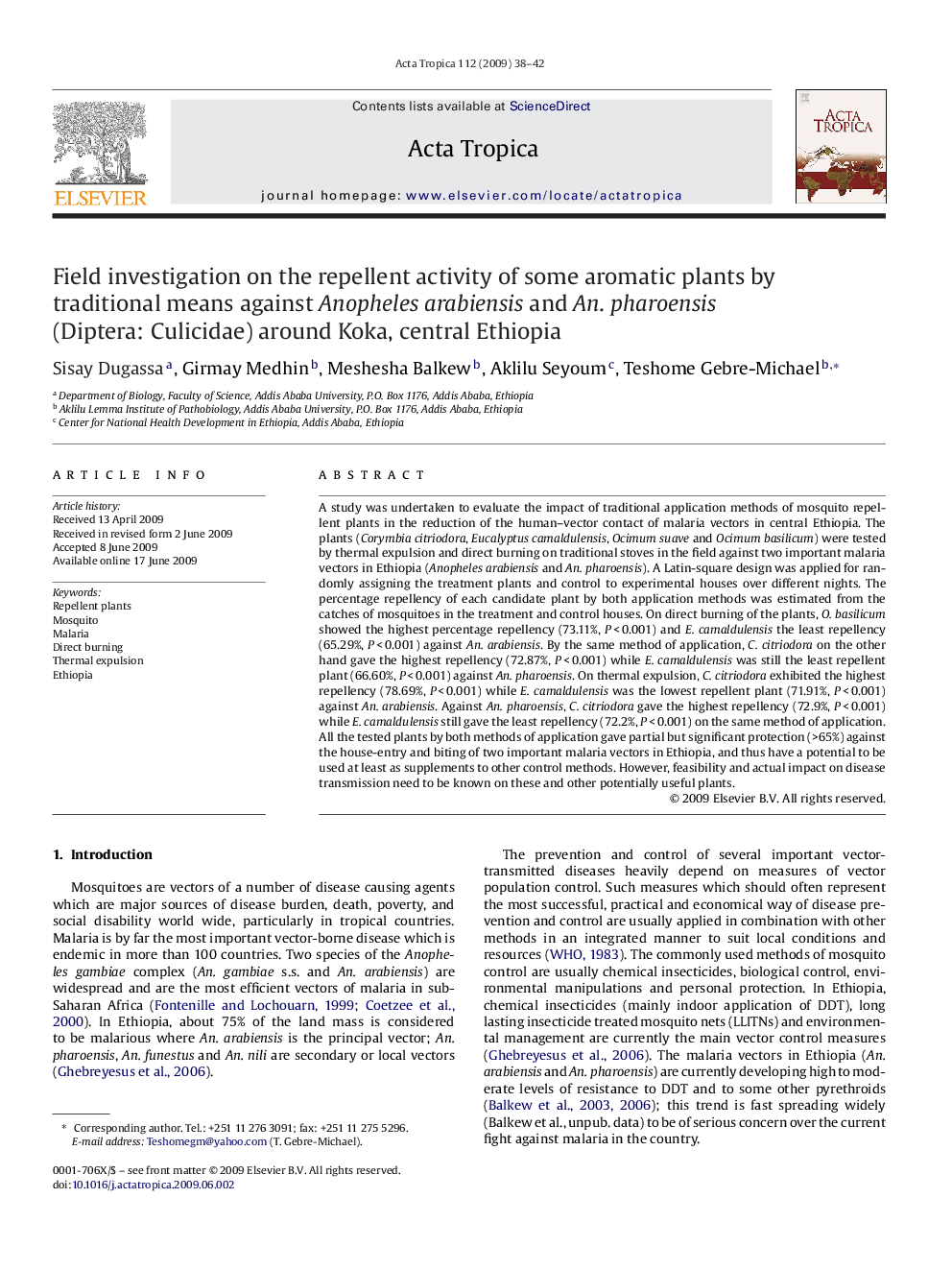| Article ID | Journal | Published Year | Pages | File Type |
|---|---|---|---|---|
| 3394061 | Acta Tropica | 2009 | 5 Pages |
A study was undertaken to evaluate the impact of traditional application methods of mosquito repellent plants in the reduction of the human–vector contact of malaria vectors in central Ethiopia. The plants (Corymbia citriodora, Eucalyptus camaldulensis, Ocimum suave and Ocimum basilicum) were tested by thermal expulsion and direct burning on traditional stoves in the field against two important malaria vectors in Ethiopia (Anopheles arabiensis and An. pharoensis). A Latin-square design was applied for randomly assigning the treatment plants and control to experimental houses over different nights. The percentage repellency of each candidate plant by both application methods was estimated from the catches of mosquitoes in the treatment and control houses. On direct burning of the plants, O. basilicum showed the highest percentage repellency (73.11%, P < 0.001) and E. camaldulensis the least repellency (65.29%, P < 0.001) against An. arabiensis. By the same method of application, C. citriodora on the other hand gave the highest repellency (72.87%, P < 0.001) while E. camaldulensis was still the least repellent plant (66.60%, P < 0.001) against An. pharoensis. On thermal expulsion, C. citriodora exhibited the highest repellency (78.69%, P < 0.001) while E. camaldulensis was the lowest repellent plant (71.91%, P < 0.001) against An. arabiensis. Against An. pharoensis, C. citriodora gave the highest repellency (72.9%, P < 0.001) while E. camaldulensis still gave the least repellency (72.2%, P < 0.001) on the same method of application. All the tested plants by both methods of application gave partial but significant protection (>65%) against the house-entry and biting of two important malaria vectors in Ethiopia, and thus have a potential to be used at least as supplements to other control methods. However, feasibility and actual impact on disease transmission need to be known on these and other potentially useful plants.
